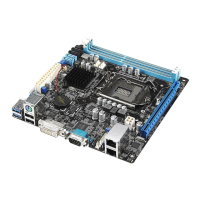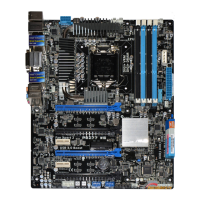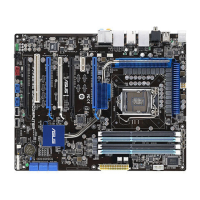3-46
Chapter 3: BIOS setup
Chapter 3
PK Management
The Platform Key (PK) locks and secures the rmware from any permissible changes.
The system veries the PK before your system enters the OS.
Delete PK
Allows you to delete the PK from your system. Once the PK is deleted, all
the system’s Secure Boot keys will not be active.
Conguration options: [Yes] [No]
Load PK from File
Allows you to load the downloaded PK from a USB storage device.
Conguration options: [Yes] [No]
The PK le must be formatted as a UEFI variable structure with time-based authenticated
variable.
KEK Management
The KEK (Key-exchange Key or Key Enrollment Key) manages the Signature database
(db) and Revoked Signature database (dbx).
Key-exchange Key (KEK) refers to Microsoft
®
Secure Boot Key-Enrollment Key (KEK).
Delete the KEK
Allows you to delete the KEK from your system.
Conguration options: [Yes] [No]
Load KEK from File
Allows you to load the downloaded KEK from a USB storage device.
Conguration options: [Yes] [No]
Append KEK from File
Allows you to load the additional KEK from a storage device for an
additional db and dbx loaded management.
Conguration options: [Yes] [No]
The KEK le must be formatted as a UEFI variable structure with time-based authenticated
variable.
DB Management
The db (Authorized Signature database) lists the signers or images of UEFI
applications, operating system loaders, and UEFI drivers that you can load on the
single computer.
Delete the db
Allows you to delete the db le from your system.
Conguration options: [Yes] [No]
Load db from File
Allows you to load the downloaded db from a USB storage device.
Conguration options: [Yes] [No]

